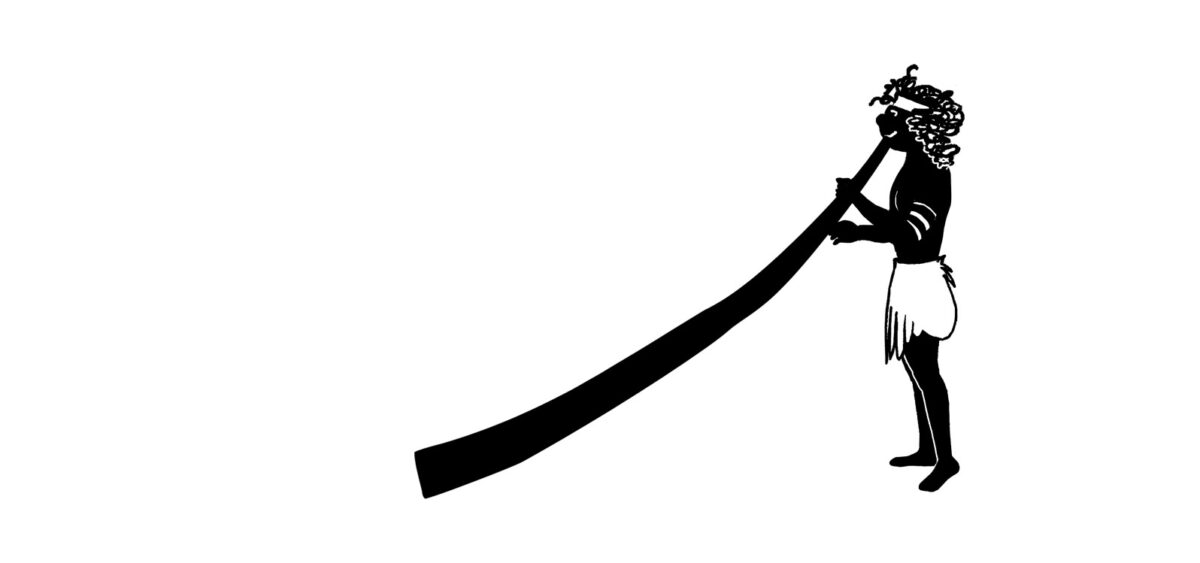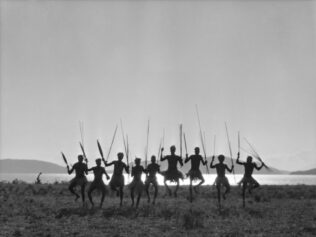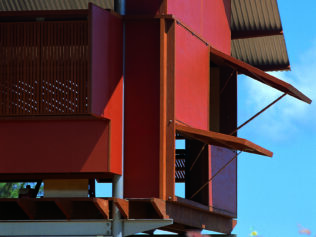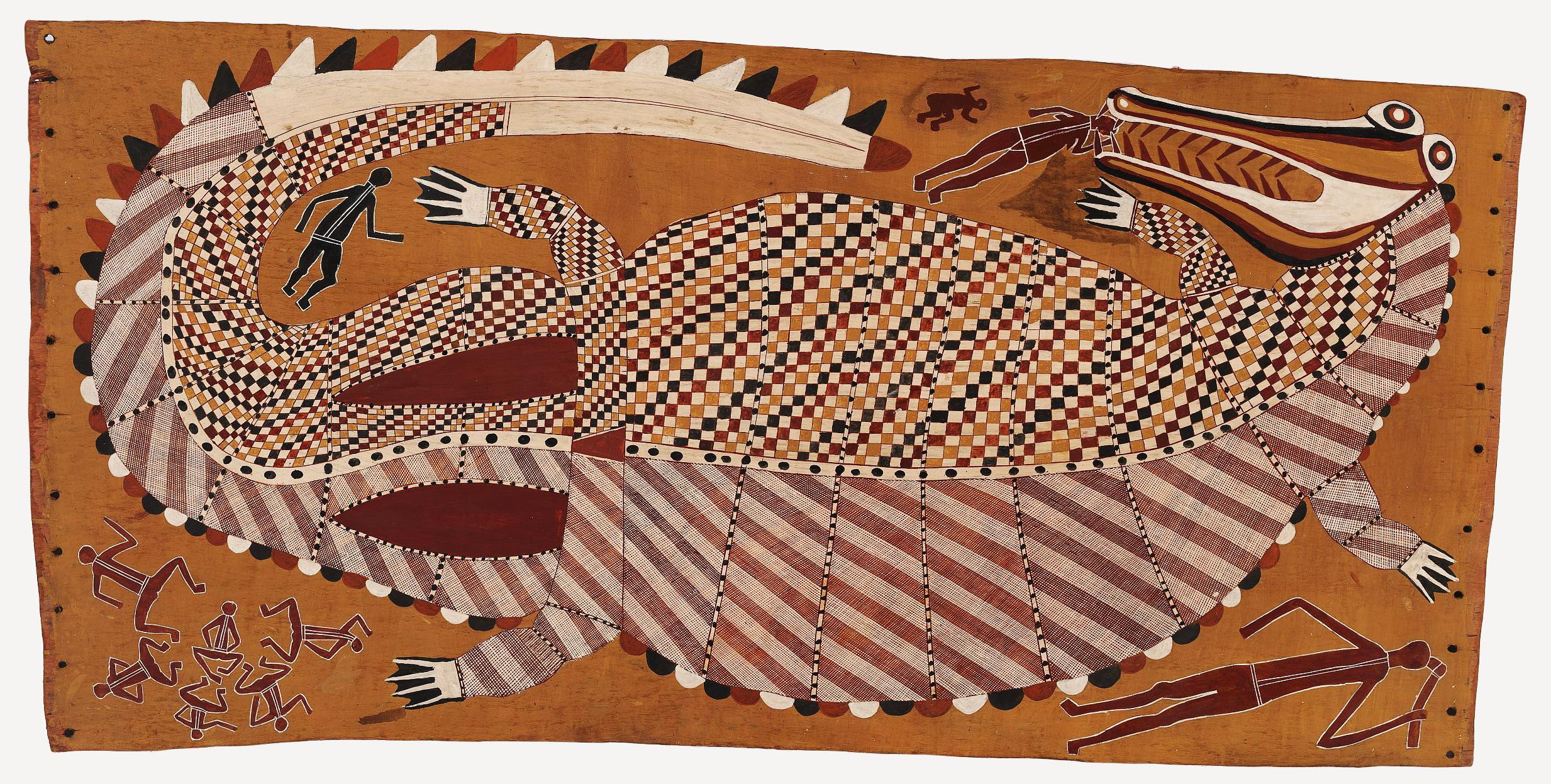
An instrument as old as time. Nowadays unjustly corrupted by souvenir shops and shopping centres. Yes indeed, I speak of the didgeridoo.
Suggested background music: Kate Bush, “The Dreaming”
It is not the synonym of the entire continent of Australia at all, only a part, or more specifically, the northern region of Kakadu. The didgeridoo still brings to mind a rather boggy terrain, because some Aboriginal Australians consider improper use of it beyond traditional ceremonies as offensive. The practice of women playing the didgeridoo was also brought into doubt. The opinion that one of the sexes should be excluded from playing the instrument is actually a half-truth; indeed though, the art in the female version was rather tolerated than desired.
The monotonous tone – which sounds a bit as if it were emanating from somewhere deep underground – accompanied rituals and shaman ceremonies. It would initiate a changed state of arousal and become a pulsating link to deceased ancestors. Today, the instrument has been ‘disenchanted’ by street musicians, beatboxers, pop artists and New Age composers of New Age symphonies. It still has its virtuosos and legends: Mark Atkins, Darryl Digarrnga, Jeremy Donovan, William Burton and Adrian Burragubba.
But really, it’s not the Aboriginal Australians we should thank for this quaint wind instrument, but rather the Australian termites. Their painstaking work wasn’t in vain. A real didgeridoo, or if you prefer, yidaki, is made of the hollowed out branches and trunks of eucalyptus trees. The search for the appropriate material for the instrument starts from an organoleptic assessment of the tree. You knock the tree trunk on the bottom, then a bit higher up; if all you hear coming from the inside is the characteristic echo of rampant emptiness, then your job is half-way done. You can then proceed to chop down the tree (nice work, termites!), clean out the mess inside, cover the wood with ochre from the outside and decorate it with subtle patterns. And this is where the hard part begins, because simply taking a deep breath is not enough.
Only mastery of the circulating breath technique will guarantee you entry into a higher level of initiation. The idea is to simultaneously blow air out through your mouth and breathe air into your lungs through your nose. Try to do that now, a kind of dry run. Couldn’t do it, could you? From an anatomical perspective, it’s impossible. Tutorials on YouTube suggest that you first need to overcome the greatest barrier, which is obviously your mind telling you that it can’t be done. Then you need to puff out your cheeks like a frog, and use their muscular energy to push the air out of your mouth while breathing air in through your nose at the same time. Before most of you throw in the towel at this point due to hyperventilation, I wish to comfort you with the wisdom that everything is difficult before it becomes easy. An adventurous soul who would manage to master the technique to perfection would be able to produce an endless note, or at least set a record for the longest note. A mere 90 minutes and 46 seconds is all you need to break the current one. The reward is worth the sacrifice though, because thanks to the spectacular circulating breath concept, you can experience entry into timelessness, a state that many people seek, during meditation for example.
And if you’re plagued by more down-to-earth problems, like snoring, you’ve just found the cure for all those evils. No prescription required! A study conducted in 2005 showed that playing the didgeridoo helps minimize this inconvenient ailment as well as sleep apnea, probably thanks to the strengthening of the muscles of the respiratory tracts. And you don’t even have to travel to Australia; all you need to do is go to the nearest hardware shop and a fetch a PVC tube (we recommend one with a diameter of around 30 millimetres and one metre in length). A didgeridoo within our own means.

Translated from the Polish by Mark Ordon









